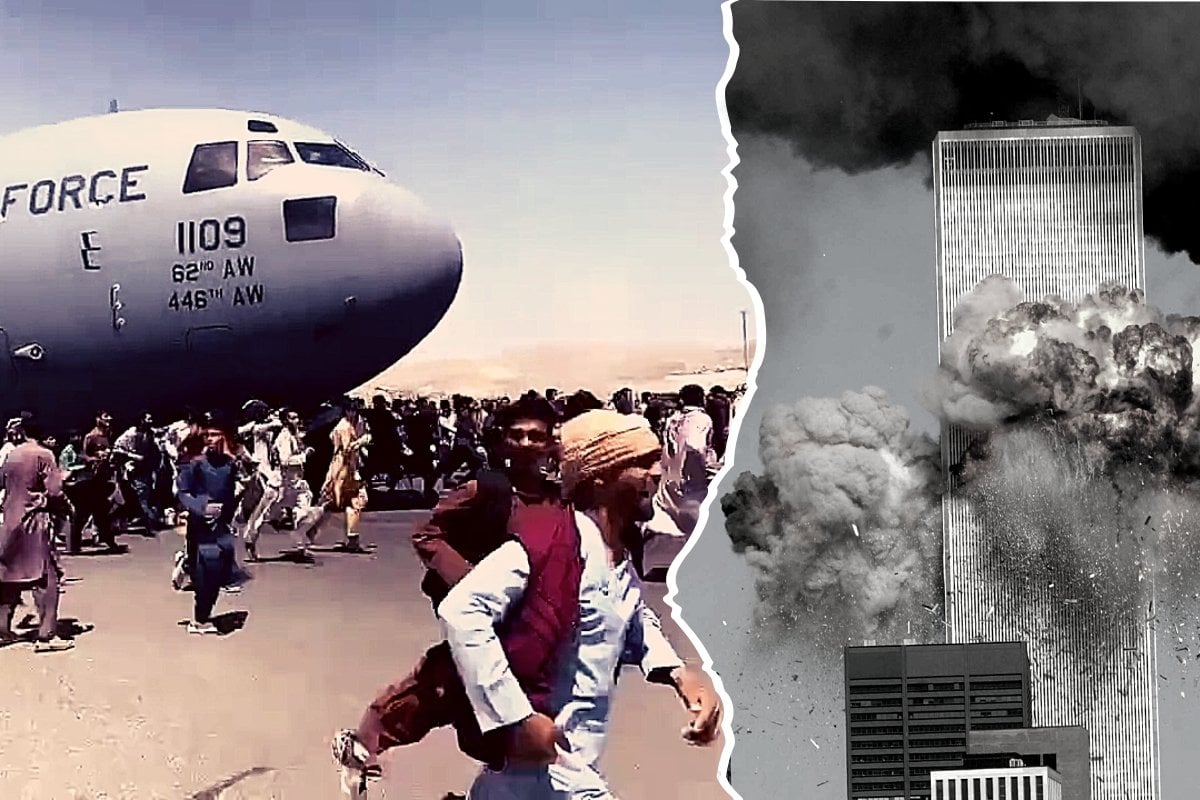
Warning: the following contains distressing images.
There are images that sear themselves into the memory. The kind that reach through the decades and become emblematic of a particular moment in history.
A naked Vietnamese girl running, crying from her smoking village, her skin scorched by napalm. An Australian child steering a boat away from Mallacoota's burning shoreline. A sailor planting a kiss on a stranger at the end of a war. An unimaginable act of terror that started another.
This week, those emblematic images come from Afghanistan, a country that this weekend fell, once again, under Taliban control.
A photograph taken at Kabul airport on Sunday shows 640 Afghani refugees crammed into the belly of a United States military C-17 transport plane, an aircraft designed to fly with half that number.
Most are men, many of whom likely aided the US in its battle against the Taliban in recent years. But women and children are scattered among them, too; one cradling a wide-eyed baby sucking on a bottle.
Then there's the footage.
Hundreds of Afghan people sprinting alongside another US military plane evacuating people from Kabul airport on Monday.
هرج و مرج در #کابل؛
— Mukhtar wafayee (@Mukhtarwafayee) August 16, 2021
لحظهی پرواز هواپیمای نظامی آمریکاییها از میدان هوایی کابل.#Afghanistan #Kabul #KabulHasFallen pic.twitter.com/3OF8S8Dmf2

Top Comments